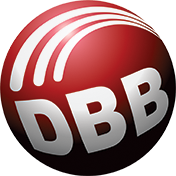
The modern hospital is an astounding environment full of technological innovations that may seem downright futuristic. Yet it’s not just these amazing tools that empower professionals to deliver the best possible care. The quality and flow of the information that moves throughout the hospital play a major role in guiding both patients and caregivers. That’s why many hospitals have introduced digital signage in waiting rooms, offices, and hallways.
Digital signage and whiteboards are making inroads into many professional environments, including hospitals. Here are six ways that hospitals are putting them to work to improve communication in healthcare.
6 Reasons Hospitals Need Digital Signage
Digital signage unlocks many new and practical opportunities to communicate in hospitals and other healthcare organizations. Among its valuable uses include:
1. Employee Coordination and Communication
Hospitals represent a highly dynamic and fast-paced environment where new information must spread rapidly. Keeping everyone on the same page represents a key challenge in hospital communication, and sometimes even centralized solutions like content management ecosystems aren’t enough.
Digital signage is rapidly assuming a valuable position in employee coordination and communication strategies. A strategically placed digital display can disseminate crucial information at a glance in an effective but non-invasive way. Many hospitals, therefore, use digital signage to:
- Make important announcements to staff
- Display schedules or times for important events
- Circulate relevant data or facts
- Provide real-time maps or monitoring
2. Common Area or Community Signage
Hospitals put a lot of thought and care into their waiting areas or shared spaces to make them as relaxing and pleasant as possible. Nonetheless, a trip to the hospital can prove nerve-wracking for some.
Whereas staff-facing digital signage exists for purely practical purposes, the technology finds other uses for patients or visitors in waiting areas. Here, digital signage provides a dynamic and exciting form of communication to deliver critical or relevant information. Some hospitals use digital signage in their waiting areas to:
- Provide entertainment and reduce patient or visitor anxiety
- Display waitlists or schedules
- Inform about features for visitors
- Create interactive interfaces with helpful information
3. Hospital Services and Announcements
Hospitals and even smaller healthcare offices frequently offer an array of services, but patients and visitors may not always know about them. Printing off brochures or papers gets expensive and wasteful – they can also become outdated quickly. Likewise, announcements may be time sensitive or relevant to only a handful of patients. Yet the information still needs to get out there.
A well-placed digital display can be precisely the solution that a hospital needs. Some organizations use a digital sign to:
- Direct visitors or patients to specific areas
- Make announcements geared towards particular individuals or groups
- Provide public tips and interesting advice
- Advertise services that seem to go unknown to patients or visitors
4. Patient Care Information
A hospital may have hundreds of patients at any given moment, and keeping in contact with them can be tough. However, digital signage can prove incredibly useful in these circumstances, too. Many displays come with interactive capabilities to allow users to manipulate the information on the screen. This empowers healthcare professionals to maintain contact with patients much more easily by:
- Being able to update maps, schedules, or information in a real-time format
- Allowing access to records or other care-related information
- Delivering live monitoring or information to professionals
- Displaying dynamic information about a condition or treatment
5. Wayfinding
If there’s anything more stressful than waiting to see a loved one in the hospital, it’s getting lost along the way. Hospitals are sprawling beehives of rooms and workers, and traditional signage can prove confusing to anyone who isn’t familiar with the wording.
In contrast, digital signage has emerged as an incredibly effective solution to hospital wayfinding. Not only can they display dynamic content, but many hospitals use touchscreens to provide specific information to individuals trying to reach a particular room or place.
6. Safety, Rules or Compliance Information
Healthcare organizations must follow specific rules and legal compliance regulations in their daily operations. Staying safe at a hospital is critical for not just effective care but also managing panic or emergencies.
A digital sign leverages its visibility and dynamic content to spread crucial information quickly. It can:
- Route visitors, patients, and employees to the nearest exits
- Advise on contamination or disease
- Remind individuals about specific rules
- Provide information about the location of safety wear or devices
Deliver Better Care by Doing Better Business
Digital signage is a remarkable technology, and the healthcare industry is putting it to excellent use. Hospitals everywhere are embracing the potentials offered by this dynamic, interactive, and customizable form of communication.
A thoughtfully placed digital sign can transform hospital communication for professionals, patients, and visitors. It’s a better way to do business and deliver better care.
Doing Better Business helps hospitals and healthcare organizations achieve operational efficiency. Contact us now to get started.

